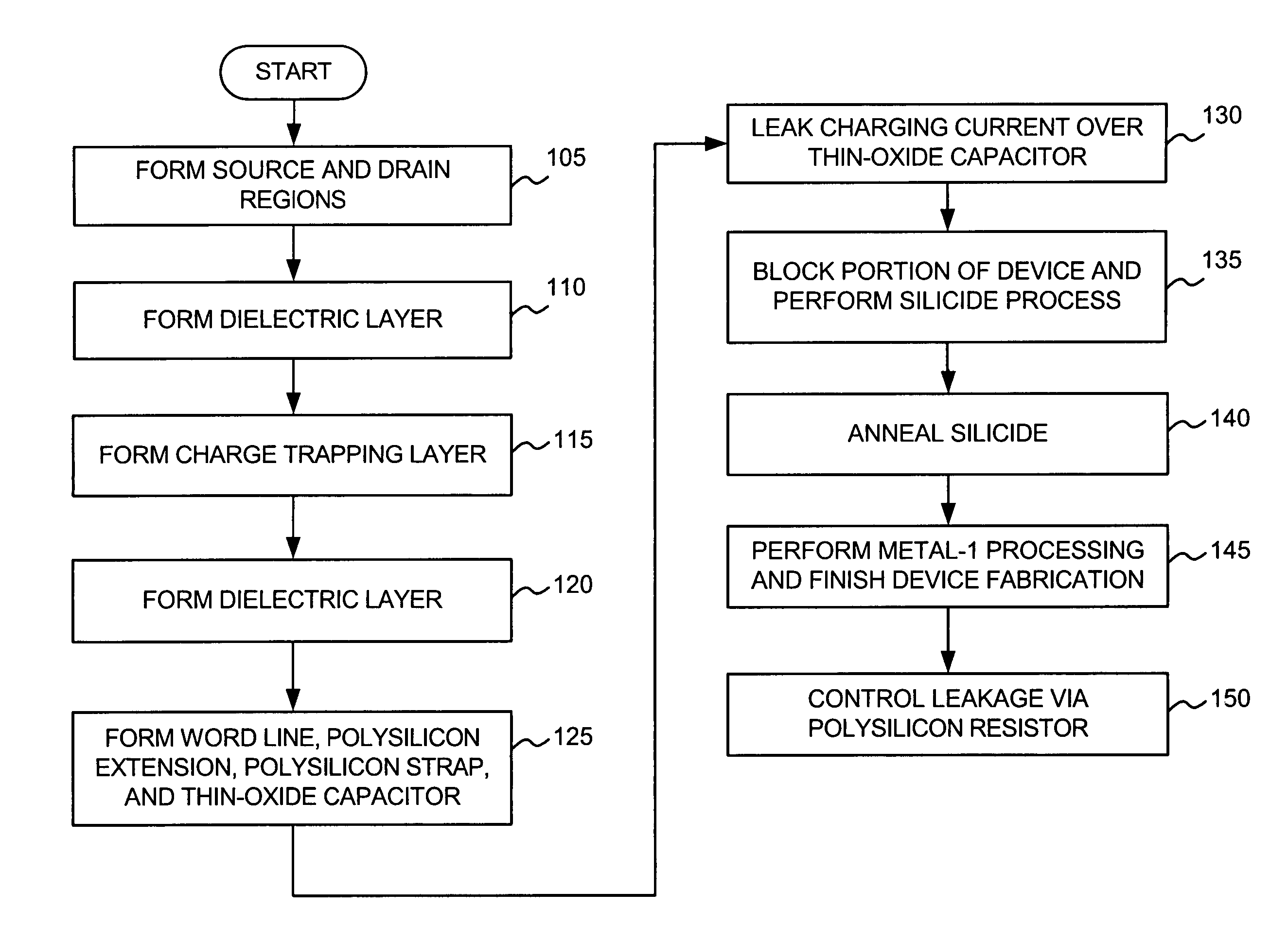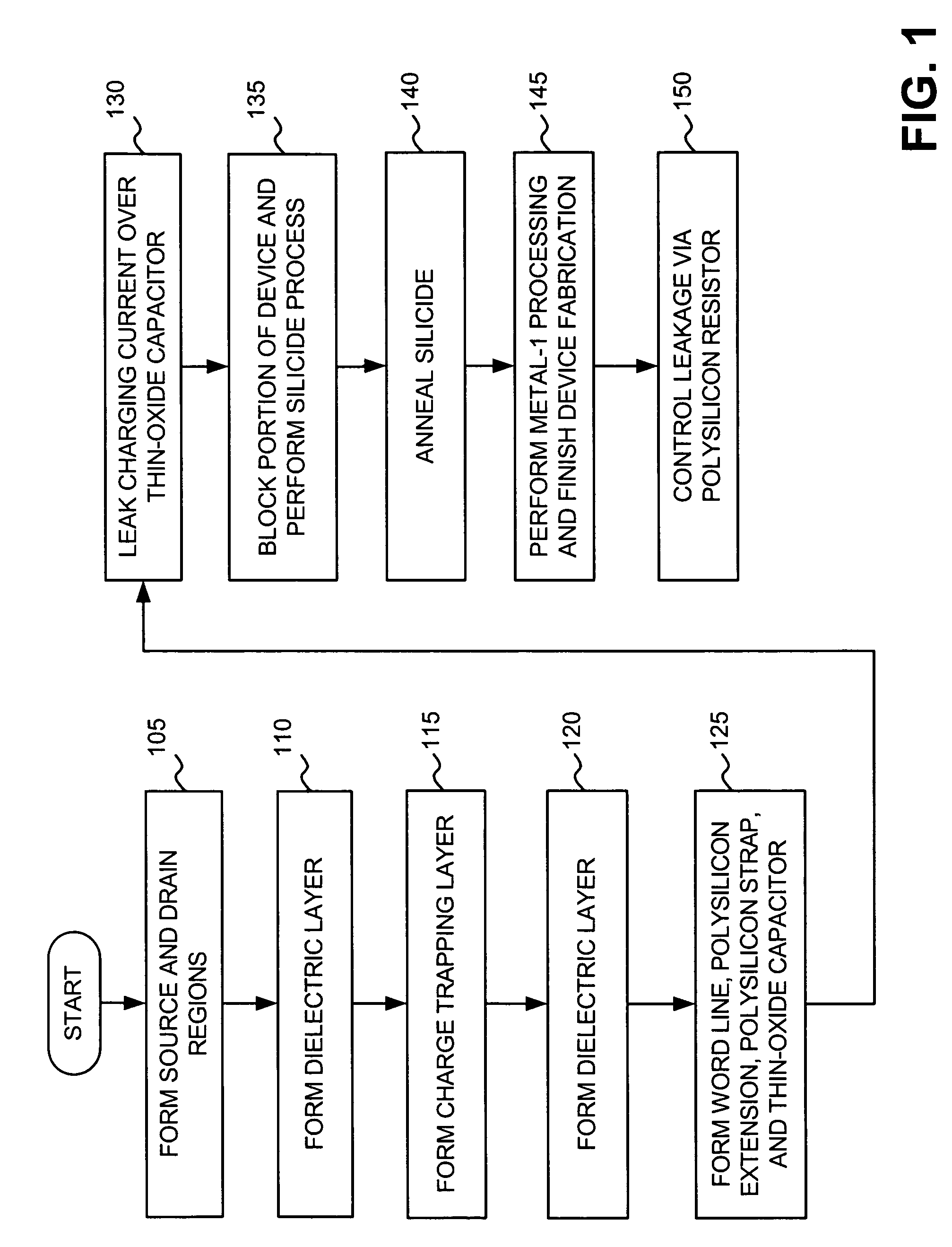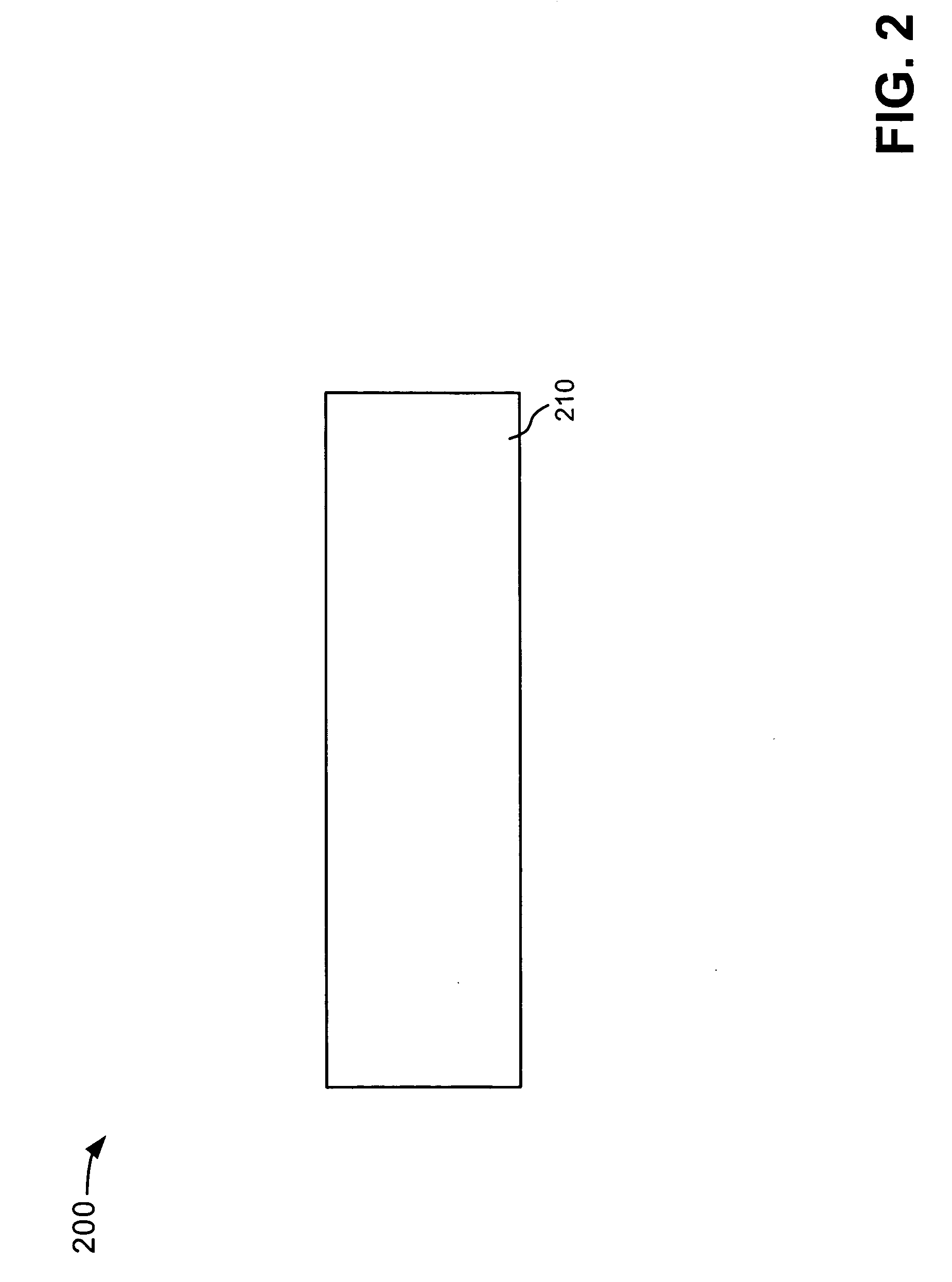System and method for protecting semiconductor devices
- Summary
- Abstract
- Description
- Claims
- Application Information
AI Technical Summary
Problems solved by technology
Method used
Image
Examples
Embodiment Construction
[0011] The following detailed description of implementations consistent with the principles of the invention refers to the accompanying drawings. The same reference numbers in different drawings may identify the same or similar elements. Also, the following detailed description does not limit the invention. Instead, the scope of the invention is defined by the appended claims and their equivalents.
Exemplary Processing
[0012]FIG. 1 illustrates an exemplary process for forming a semiconductor memory device in an implementation consistent with the principles of the invention. In one implementation, the semiconductor memory device includes a core memory array of a flash memory device. FIGS. 2-9 illustrate exemplary views of a semiconductor memory device fabricated according to the processing described in FIG. 1.
[0013] With reference to FIGS. 1 and 2, processing may begin with a semiconductor device 200 that includes a substrate 210. Semiconductor substrate 210 may be any appropriately...
PUM
 Login to View More
Login to View More Abstract
Description
Claims
Application Information
 Login to View More
Login to View More - R&D
- Intellectual Property
- Life Sciences
- Materials
- Tech Scout
- Unparalleled Data Quality
- Higher Quality Content
- 60% Fewer Hallucinations
Browse by: Latest US Patents, China's latest patents, Technical Efficacy Thesaurus, Application Domain, Technology Topic, Popular Technical Reports.
© 2025 PatSnap. All rights reserved.Legal|Privacy policy|Modern Slavery Act Transparency Statement|Sitemap|About US| Contact US: help@patsnap.com



